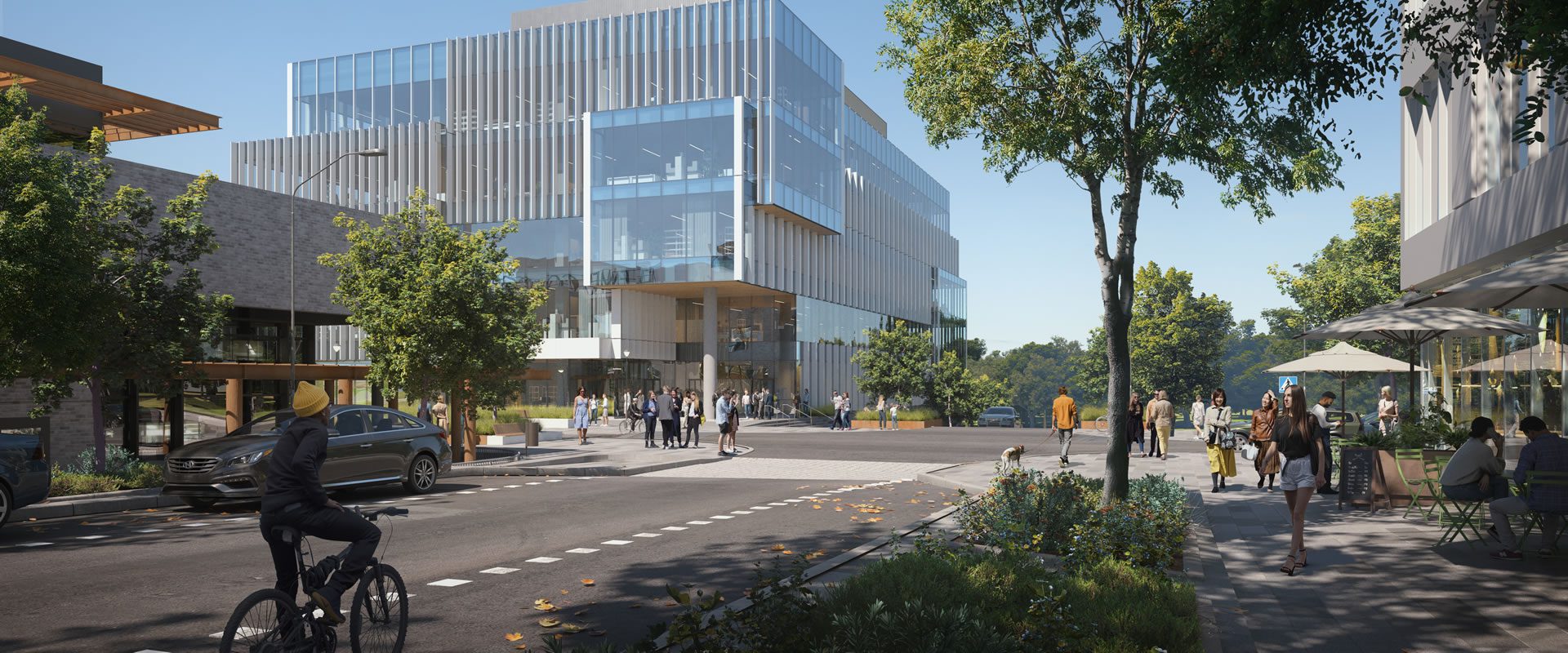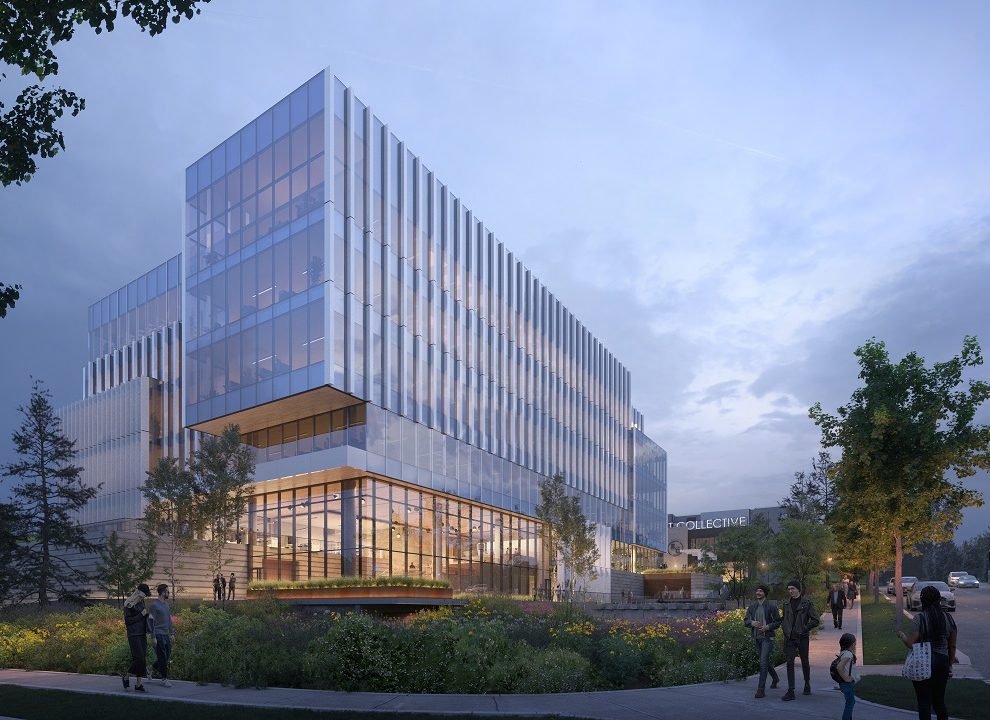
New chapter: University Research Park Creates a Sustainable Future Packed with Discovery
The Wisconsin Idea is the notion that the benefits of the University of Wisconsin should ripple well beyond the borders of campus. If you wanted to see the Wisconsin Idea in action, you could visit University Research Park. Taking a pioneering role in solving today’s problems while constantly looking ahead to build a future filled with the promise of discovery is the signature of the University Research Park.
The COVID-19 pandemic presented a challenge that companies and scientists in the park eagerly embraced. As the pandemic deepened, at least six private companies and two UW-Madison research labs at the west-side park swiftly pivoted to launch pandemic-related projects.
“We are a place where solutions are born. When you see something like the pandemic hit the world with a shock, it really reminds you of how important it is to invest in life science research and development to be prepared to meet these kinds of challenges,” says Aaron Olver, managing director of the park, which is home to more than 125 companies employing about 4,100 people.
Nurturing and expanding collaboration and a sense of community is vital – for pushing the boundaries of discovery and to enriching the Madison area.
That’s why the park – begun in 1984 – is planning for its next chapter, one that maps out a more vibrant urban feel with amenities igniting lively collaboration, entrepreneurship and community involvement.
Called the Element Collective District, the development concept calls for 400,000 square feet of construction that includes a 120-room hotel, a multistory laboratory and office building, 180 units of housing, retail space, a climbing gym, a food hall and parking at the corner of Mineral Point Road and Whitney Way.
“It will cause more mingling and chance encounters and create a more campus-like park,” says Olver. “Our companies love the location, but they don’t have a place to go to lunch, have coffee or have a drink together after work. And employees increasingly express an interest in living closer to work.”
Just as important, making the 250-acre park denser also reduces sprawl, promotes high quality infill development, encourages employees to use public transit on a planned Bus Rapid Transit route and creates a whole neighborhood that benefits companies, their employees and the Madison community.
“When you think about Madison-area employment centers, University Research Park is the least dense and contains no housing,” Olver says. “Yet it’s one of the few conveniently located centers inside the beltline with great bus and bike access.”
At a time when life and work are more integrated than ever before, providing housing in the park for the first time will helps companies attract employees and reduce reliance on commuting.

Element Labs:
142,000 square foot space built specifically for the needs of scaling lab companies
“As we think about how we address equity and sustainability in the Madison area and deal with climate resilience, what we really need is healthier, more transit friendly development patterns,” says Olver.
“We need more ‘whole’ neighborhoods. This is an incredible opportunity to be better stewards of the land we have and give the park a dynamic new environment.”
The Milwaukee-based Mandel Group will partner with University Research Park to develop the project, which has an expected groundbreaking later this year, with completion in 2023. The pandemic spotlights how the park’s companies and researchers reacted quickly to tackle the emerging crisis. Their creativity spawned a variety of virus-related projects aimed at muting the outbreak’s effects.
Those efforts ranged from publicly-traded Exact Sciences, which added large-scale COVID testing to its repertoire, to GoDX, a diagnostics startup that is developing a rapid, instrument-free COVID diagnostic tool offering results in 30 minutes.
Nimble Therapeutics partnered with Roche Diagnostics to help diagnose COVID patients and the David O’Connor Lab worked to develop a saliva-based test that offered results in hours. Nearby, world-renowned UW-Madison virologist Yoshi Kawaoka’s Influenza Research Institute partnered with Flugen to develop a nasal spray vaccine.
The Element Collective District aims to broaden that creativity and contribute to the success of its companies in innovating to meet future challenges, while providing the community a new model for high-quality development.
“We’re strong now and we want to ensure that we’re reinvesting in the park so that it will continue to be strong 50 years from now. This is a long-term vision to help keep Madison at the forefront of solving global challenges, whether they are thorny life science issues or better city-building,” Olver says.
By creating a neighborhood where ideas can soar, companies can thrive and the community can live, work and play in a sustainable way, University Research Park will enhance its record as a job creator transforming research into life-changing discoveries.

